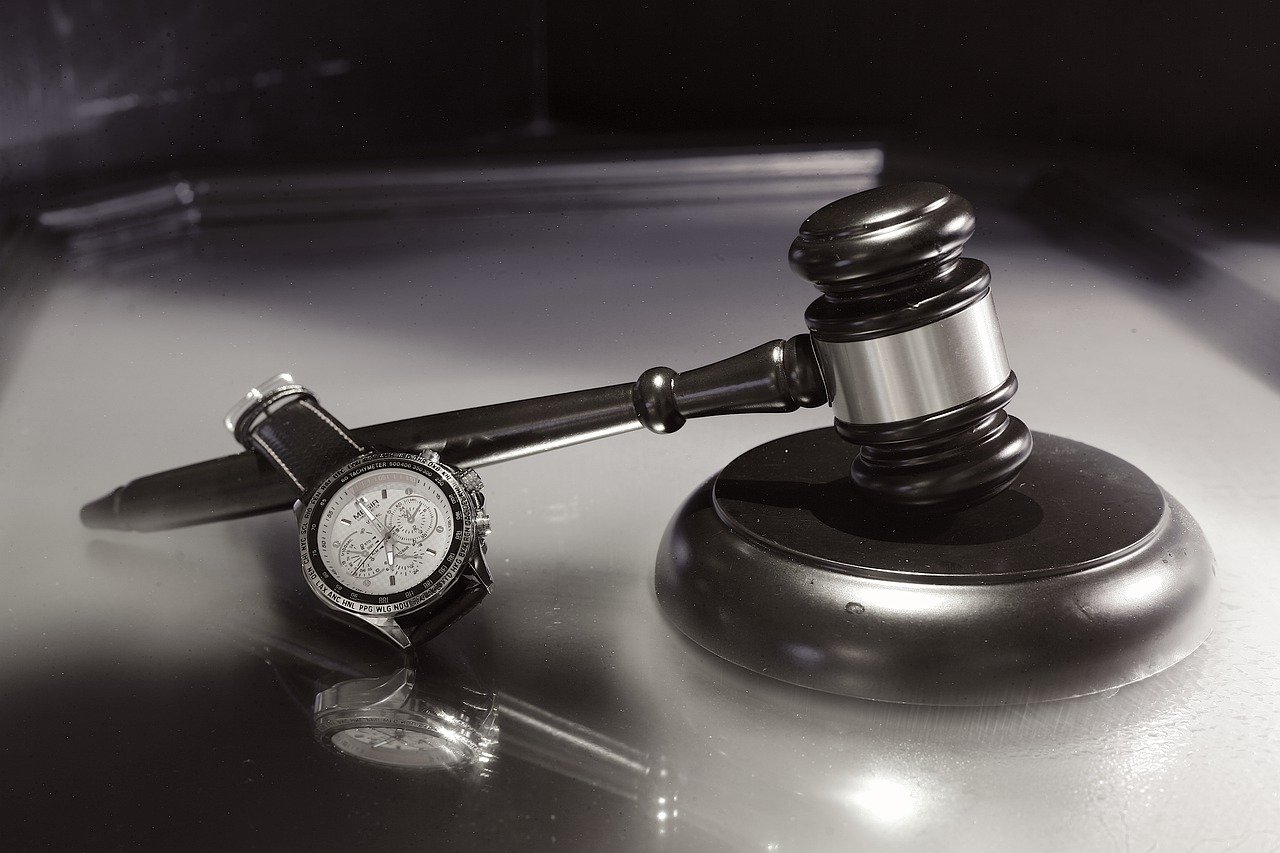In the ever-evolving landscape of technology, the legal world is not immune to its transformative effects. The courtroom, once a bastion of traditional legal proceedings, is undergoing a profound metamorphosis driven by advancements in technology. From artificial intelligence and automation to predictive analytics and blockchain, the future of courtroom technology promises to revolutionize the way justice is served, making it more efficient, transparent, and accessible. In this comprehensive article, we delve into the intricacies of these technologies and explore how they are shaping the future of our judicial system.

Harnessing the Power of Artificial Intelligence in Courtrooms
The Rise of AI-powered Legal Research
Artificial Intelligence (AI) has infiltrated nearly every facet of modern life, and the legal profession is no exception. AI-powered legal research tools are transforming the way lawyers prepare for cases. Traditional legal research involved sifting through mountains of documents and legal precedents, a time-consuming and often error-prone process. Now, AI tools equipped with Natural Language Processing (NLP) capabilities can scan and analyze vast repositories of legal texts, extracting relevant information, and summarizing complex cases in seconds. This not only saves countless hours but also reduces the chances of missing critical precedents or legal nuances.
AI-driven legal research is not limited to static data. Machine Learning algorithms are continuously improving their ability to predict case outcomes based on historical data. This predictive analysis can provide lawyers with valuable insights, helping them make more informed decisions about litigation strategies. Moreover, AI’s ability to analyze massive datasets can uncover trends and patterns that may have otherwise remained hidden, promoting a deeper understanding of legal issues and contributing to the evolution of jurisprudence.
AI in Jury Selection and Predictive Analytics
Jury selection is a crucial phase of any trial, with the composition of the jury often determining the verdict. AI-powered algorithms can now assist in the selection process by analyzing juror profiles and predicting their potential biases. By analyzing social media activity, public records, and other relevant data, AI can provide attorneys with valuable insights into prospective jurors’ backgrounds and attitudes. This enables legal teams to make more informed decisions during jury selection, increasing the likelihood of a fair trial.
Predictive analytics, fueled by AI, are also making their mark in the courtroom. By analyzing historical case data, AI can predict the likely outcome of a case based on similarities to past cases. While not a crystal ball, this technology can help attorneys assess the strengths and weaknesses of their arguments and better advise their clients. It can also assist judges in managing caseloads more efficiently by identifying cases that are likely to settle and those that may require a full trial.
Automation of Human Tasks: Streamlining Legal Processes
E-filing and Digital Document Management
The digitization of legal documents and processes is revolutionizing the way courts operate. E-filing, in particular, has become increasingly popular. Instead of the traditional paper-based filing system, where documents could be lost, damaged, or misfiled, electronic filing streamlines the entire process. Attorneys can submit documents online, and court clerks can process them more efficiently. This not only saves time and resources but also reduces the risk of errors and delays.
Digital document management systems are also transforming the way legal professionals handle and share documents. These systems provide secure, centralized repositories for case-related documents, enabling attorneys, judges, and other stakeholders to access crucial information from anywhere, at any time. Document sharing and collaboration have never been easier, promoting a more efficient and transparent legal process.
Automation of Routine Legal Tasks
Automation is ushering in a new era of efficiency in the legal profession by tackling routine and time-consuming tasks that have long burdened legal professionals. One remarkable application of automation is the deployment of chatbots and virtual assistants to handle inquiries from the public and legal practitioners. These digital assistants have become the first point of contact for individuals seeking information on court procedures, filing requirements, and answers to frequently asked questions. By swiftly and accurately addressing these inquiries, chatbots and virtual assistants free up human staff from the repetitive task of providing basic information, allowing them to redirect their energy towards more complex and specialized aspects of their work.
Furthermore, the integration of AI-powered software has revolutionized the way legal documents are reviewed and drafted. Traditionally, the creation of legal documents, such as contracts and pleadings, required meticulous human scrutiny—a process susceptible to human error and time constraints. However, AI-driven software excels in this arena by swiftly analyzing and generating legal documents with remarkable speed and precision. These systems possess the ability to detect inconsistencies, errors, and potential legal issues, significantly reducing the risk of costly mistakes that could lead to litigation or disputes. While automation cannot entirely replace the expertise of legal professionals, it unquestionably enhances efficiency and diminishes the administrative overhead within law firms and courtrooms.
The transformative power of automation extends beyond mere time-saving benefits. It redefines the roles of legal professionals, enabling them to focus on higher-level tasks that demand human judgment and legal expertise. By automating routine legal tasks, lawyers are liberated from the drudgery of repetitive work, allowing them to dedicate their skills and knowledge to more strategic endeavors, such as legal strategy development, client counseling, and courtroom advocacy. This shift not only enhances the quality of legal services but also contributes to a more agile and responsive legal system, capable of addressing complex and evolving legal challenges with greater precision and proficiency. In essence, automation is reshaping the legal landscape, making it more efficient, cost-effective, and ultimately better equipped to serve the needs of justice.

The Role of Blockchain in Ensuring Transparency and Security
Blockchain for Evidence Management
Blockchain technology, originally renowned for its pivotal role in the world of cryptocurrencies, is now making significant inroads into the legal sphere, introducing a new era of enhanced security and transparency. One particularly promising and transformative application of blockchain within the legal domain is evidence management. In criminal cases, the impeccable maintenance of the chain of custody for physical evidence is paramount to ensuring the integrity of the legal proceedings. Here, blockchain steps in as a guardian of irrefutable evidence custodianship.
Blockchain operates as an immutable and transparent ledger, meticulously documenting the entire journey of physical evidence from the moment of collection through to its presentation in the courtroom. This unalterable record, cryptographically secured and distributed across a network of nodes, serves as an impervious barrier to any attempts at tampering or unauthorized alterations of evidence custody. Such incorruptibility offers a profound reassurance to both the legal practitioners and the public, reinforcing the authenticity and reliability of the evidence introduced during a trial. This not only bolsters the credibility of the judicial process but also reinforces the fundamental principles of fairness and justice.
Moreover, the decentralized nature of blockchain technology plays a pivotal role in safeguarding evidence against data manipulation or corruption. By storing the custody and access records of evidence on a distributed ledger, the technology effectively eliminates the risk associated with centralized databases susceptible to unauthorized alterations or malicious interference. In this decentralized paradigm, no single entity possesses the unilateral authority to modify or destroy crucial evidence records. Instead, the data is held collectively across a network of nodes, each verifying and validating the integrity of the evidence custody chain. This democratization of data governance not only ensures the utmost transparency but also reinforces public trust in the legal system, assuring citizens that their rights and interests are protected with the utmost vigilance and integrity.
Smart Contracts for Legal Agreements
Blockchain’s smart contract functionality has the potential to revolutionize the way legal agreements are executed and enforced. Smart contracts are self-executing agreements with the terms of the contract written into code. Once the predefined conditions are met, the contract automatically executes, eliminating the need for intermediaries such as lawyers or notaries.
In the future, parties entering into legal agreements could use blockchain-based smart contracts to streamline the process. These contracts could automatically enforce terms, trigger payments, and record transactions, all while maintaining an auditable and immutable record on the blockchain. This not only reduces the potential for disputes but also expedites the execution of contracts, benefiting businesses and individuals alike.
The Road Ahead: Ethical and Legal Considerations
As courtroom technology continues to advance, it brings with it a host of ethical and legal considerations that must be carefully addressed.
Privacy and Data Security
The increased use of AI in the courtroom raises concerns about the privacy and security of sensitive information. AI algorithms often rely on vast amounts of data, including personal information about individuals involved in legal cases. It is crucial to establish robust data protection measures to safeguard this information from breaches and unauthorized access. Additionally, there must be clear guidelines on the retention and deletion of data once it is no longer needed for legal proceedings.
Bias and Fairness
The specter of bias and fairness looms prominently as artificial intelligence systems become integral to the legal decision-making process. These AI algorithms, poised to revolutionize the judicial landscape, inherently rely on the data they are trained on. If this training data contains historical biases, whether implicit or explicit, the AI systems can unwittingly perpetuate those biases in their predictions and recommendations. This potential for bias in AI presents a grave concern, as it can lead to decisions within the legal system that are not only unfair but also discriminatory, disproportionately affecting marginalized or underrepresented groups.
Recognizing the gravity of this issue, it is imperative to establish rigorous mechanisms for continually monitoring and auditing AI systems for bias. A robust framework for bias mitigation must be woven into the fabric of AI implementation within the legal field. This includes scrutinizing training data to identify and rectify biases, as well as periodically assessing AI algorithms for any disparate impacts on various demographic groups. Additionally, transparency in AI decision-making is vital; the inner workings of AI systems must be comprehensible to humans, allowing legal professionals and the public to scrutinize the rationale behind AI-generated recommendations. Through ongoing diligence and scrutiny, we can aspire to create AI systems that uphold the principles of fairness, justice, and equality within the legal system, rather than perpetuating historical inequities.
Legal Standards and Accountability
The integration of technology into the courtroom requires the establishment of legal standards and accountability mechanisms. Who is responsible when AI systems make errors or fail to perform as expected? How can individuals seek redress if they believe their rights have been violated by automated processes? Addressing these questions is essential to maintaining public trust in the judicial system.
Conclusion
The future of courtroom technology is marked by the convergence of artificial intelligence, automation, blockchain, and predictive analytics. These technologies promise to make the legal system more efficient, transparent, and accessible. Lawyers will have powerful tools at their disposal for research and case preparation, while judges will be better equipped to manage caseloads and ensure fair trials. Blockchain will enhance the security and transparency of evidence management and legal agreements.

However, as we journey into this new era of legal tech, we must tread carefully, addressing ethical and legal concerns to ensure that these advancements benefit all members of society. The transformation of the courtroom is underway, and with thoughtful planning and regulation, we can usher in a renaissance in the legal world that serves justice more effectively and fairly than ever before.

